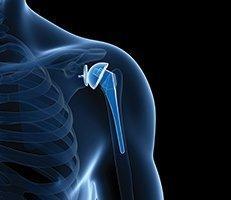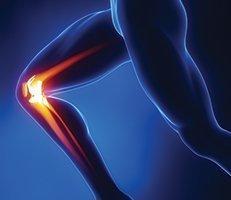An ACL tear is an injury that can happen to anyone, but most commonly occurs in athletes who participate in contact sports. The anterior cruciate ligament is an important part of the knee that keeps it stable. If injured, the ACL is unable to keep the hinge joint in place and help the knee make smooth movements without the bones of the leg rubbing together.
At our facility, we offer a variety of options for patients suffering from knee injuries. Additionally, we want our patients to be knowledgeable about the hinge joint and its anatomy, which is one of the best ways to prevent ACL injuries.
Knee / Anterior Cruciate Ligament Anatomy
The knee is one of the most complex joints in the human body. The hinge joint contains three bones along with the ligaments that connect them together. The femur (thigh bone), tibia (shin bone), and the patella (knee cap) all are a part of the hinge joint. Surrounding muscles and ligaments control the motion of the knee and protect it from damage at the same time. The medial and lateral collateral ligaments stabilize the knee from side-to-side. The medial meniscus and the lateral meniscus act as shock absorbers for the knee. These center the knee joint during activity and lessen the stress on surrounding cartilage.
The anterior cruciate ligament keeps the extension and hyperextension of the hinge joint in check as well as works with the PCL to guide the rotation of the hinge joint. All of these pieces put together make the knee a smooth gliding joint.
Common Knee Injuries
The knee is a vulnerable target for many types of injuries due to its anatomy, and one of the most common reasons people visit the doctor is for knee trauma and pain.
Common knee injuries include the following:
- Fractures
- Dislocations
- Strains
- Sprains
- Ligament tears
Many knee injuries simply require a brace or rehabilitation exercises, but some injuries are more serious and may require surgery to be fully corrected.
How is the Anterior Cruciate Ligament Injured / Mechanism of Injury
 The anterior cruciate ligament is torn as a result of awkward rotation, quick acceleration, or the hyperextension of the hinge joint. As the ligament tears, patients usually report a “popping” sound and sensation in the hinge joint. Most ACL injuries occur due to non-contact situations. Twisting the knee is the most common way to tear the AC, and if the knee bends in the wrong direction during physical activity, it’s likely to tear as well.
The anterior cruciate ligament is torn as a result of awkward rotation, quick acceleration, or the hyperextension of the hinge joint. As the ligament tears, patients usually report a “popping” sound and sensation in the hinge joint. Most ACL injuries occur due to non-contact situations. Twisting the knee is the most common way to tear the AC, and if the knee bends in the wrong direction during physical activity, it’s likely to tear as well.
Sports like basketball, football, skiing, or soccer carry a high risk of tears. These sports tend to require a lot of jumping, landing, step maneuvers, and quick movements. When these movements are more than what the ACL can handle, it may tear.
ACL Symptoms – Acute / Chronic
Although other injuries to the knee can cause similar symptoms to that of an anterior cruciate ligament injury, there are distinct symptoms that characterize the tearing of an ACL in the knee. After injuring the ACL, you may have to stop the activity that you’re doing, even if you still have the ability to walk. More severe injuries may cause you to collapse under the injured knee.
Symptoms of a torn ACL include:
- Hearing a “pop” in the knee at the time of injury
- Knee instability
- Pain on the outside and around the hinge joint
- Knee swelling
- Limited knee movement
Anterior Cruciate Ligament Tear and Gender
ACL tears are common injuries seen in sports medicine. Athletes of all ages and genders are at risk to sustain these injuries, but it females have a higher risk of ACL tears than men. This can be attributed to a variety of factors, including body composition, strength, and the movements required in their sports.
Anterior Cruciate Ligament Tear in Kids / Teens
ACL injuries can happen at any age, but they are the most complicated to treat when they occur in children and teens. The mechanism of the injury is the same, but due to their growing bodies, it is trickier to treat a torn ACL in a child. The growth plates must be avoided during ACL reconstruction surgery in kids and teens so permanent damage does not follow the injury.
Anterior Cruciate Ligament Injury Prevention
The prevention of injuries is just as important as the way the injuries are treated. With proper training and physical regimens, ACL injuries can be avoided. Trainers and physical therapists can develop plans to help athletes target and strengthen weak muscles. Making an appointment with a physical therapist or sports medicine specialist is a good way to prevent injuries to the ACL before you start your training. Also, the development of good habits in young athletes helps to prevent ACL injuries later on in life.
Please read more about ACL Knee Strains, Injuries, and Strains on the American Academy of Orthopedic Surgeons page.
Next, read about the ACL Knee Anatomy.
















